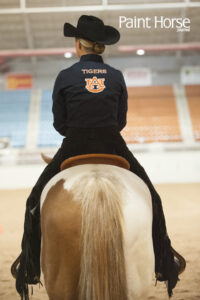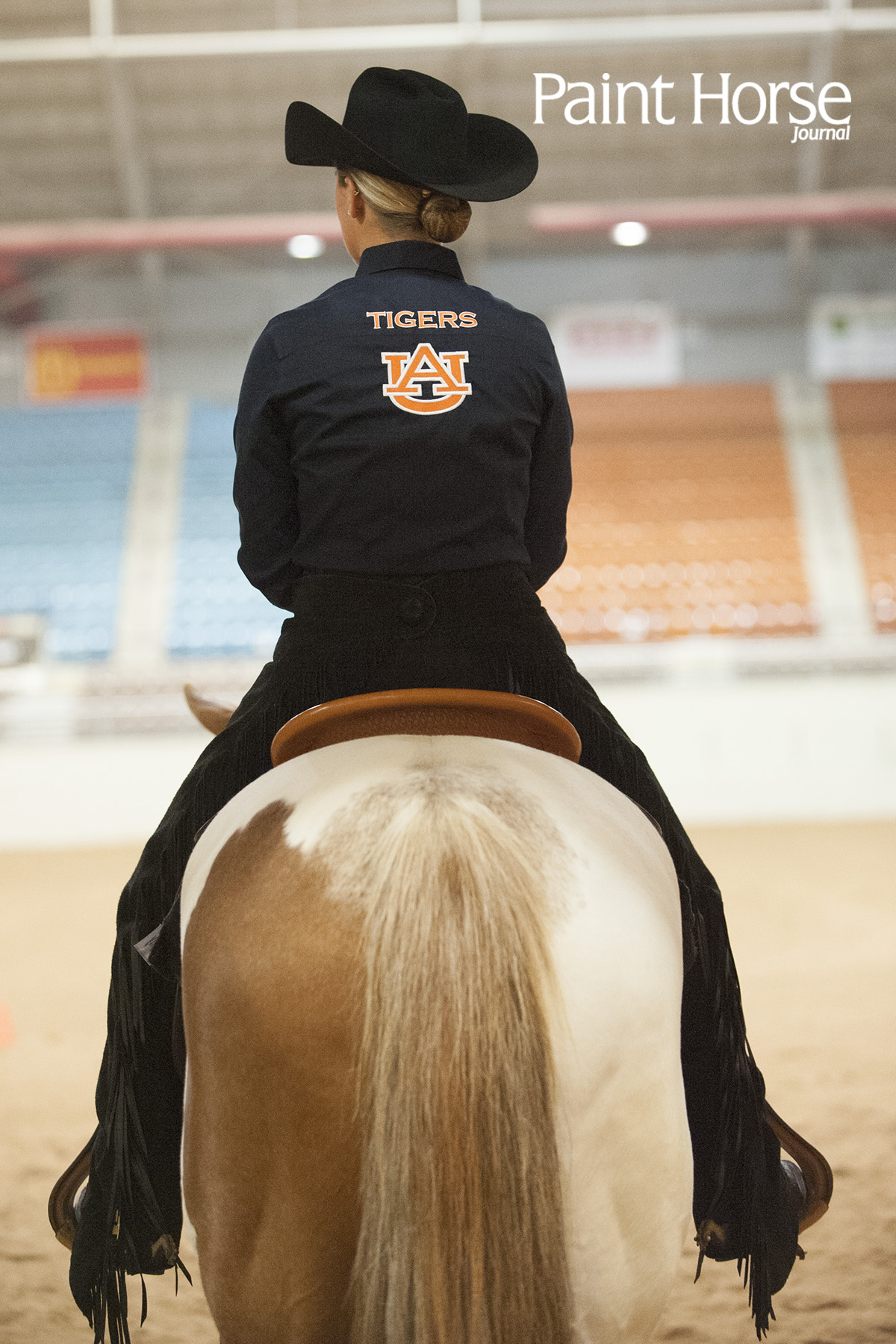The National Collegiate Athletics Association’s Committee on Women’s Athletics recently recommended to remove equestrian from the organization’s list of emerging sports. In response, Kansas State University Athletics announced this week plans to drop its sponsorship of equestrian as part of its varsity athletic programs. APHA and a number of other equine associations regret these decisions—read the story here.
 APHA recognizes the impact Women’s Equestrian programs can have on the development of young horsewomen in the equine industry. Anyone interested in preserving Women’s Equestrian’s status as a valuable NCAA emerging sport is urged to voice their support for Women’s Equestrian to university and NCAA personnel who might be part of the decision-making process regarding the sport at the local and national levels.
APHA recognizes the impact Women’s Equestrian programs can have on the development of young horsewomen in the equine industry. Anyone interested in preserving Women’s Equestrian’s status as a valuable NCAA emerging sport is urged to voice their support for Women’s Equestrian to university and NCAA personnel who might be part of the decision-making process regarding the sport at the local and national levels.
Based on available information, the NCAA Legislative Council will be next to review the committee’s recommendations regarding Women’s Equestrian on October 20, followed by the NCAA Leadership Council on October 22, the NCAA Executive Committee on October 29 and the NCAA Board of Directors on October 30—a list of contacts for these groups, as well as current Division I and II Women’s Equestrian programs is available at apha.com/ncaa-equestrian.
APHA has outlined eight talking points regarding the impact and importance of Women’s Equestrian programs for supporters’ use in voicing their support. Unless otherwise noted, facts and figures came from the National Collegiate Equestrian Association.
– Women’s Equestrian’s large squad size helps universities with Title IX compliancy.
Title IX prohibits bias based on sex in schools, which includes NCAA athletics—emerging sports, such as Women’s Equestrian, play a valuable role in Title IX compliancy. With an average of 38 to 46 athletes on a Women’s Equestrian team, equestrian has one of the largest squad sizes of any NCAA sport—only rowing and track & field exceed it. This makes equestrian particularly attractive to universities regarding Title IX compliance. Each Division I Women’s Equestrian team is allotted 15 scholarships annually for their student athletes; these scholarships are often carved into partial scholarships, which amplifies their financial aid impact for students. Because TItle IX compliancy will still have to be met by schools receiving federal funds, Women’s Equestrian remains an attractive option to help fulfill these requirements—which is why support of keeping Women’s Equestrian as an NCAA emerging sport is vital.
– A large pool of potential equestrian student athletes already exists.
Equestrian organizations like APHA, AQHA, NRHA, USEF and USHJA have large bases of Youth who are already pursue equestrian sports, and these associations’ championship events are favorite scouting grounds for potential student athletes. APHA alone has more than 5,000 participating Youth members.
– Women’s Equestrian has a low cost per student athlete.
Equestrian is among the least-expensive NCAA sports, coming in at $3,000 to $7,000 per athlete. Total operating expenses for the sport can be as low as $100,000 annually.
– Women’s Equestrian has a flexible team structure.
Universities can choose to offer Hunt Seat only, Western only or both disciplines, based on their resources and student-body interest. Athletes are judged on correct body position, poise, confidence and ability to perform in concert with her randomly selected mount, making it a level playing field for all student athletes.
– Women’s Equestrian competitions are economical.
Competition horses are provided by the host teams, and mounts are drawn at random for student athletes, who compete in a tournament-style head-to-head competition to win match points. Therefore, the visiting school is free of the burden of hauling their own horses and tack to competitions, making for more economical travel costs.
– Equestrian student athletes have high GPAs and other valuable characteristics.
The average GPA of a Women’s Equestrian student athlete is 3.3, which is among the highest in collegiate sports. Equestrian sports attract student athletes who are responsible, dedicated, studious, poised, confident and gifted in both athletics and academics.
– Women’s Equestrian fosters partnerships with the community.
In addition to being a spectator-friendly sport, Women’s Equestrian programs frequently work with members of the local community—in the form of private stables, feed and tack suppliers, Western wear stores and more—to secure sponsorships or partnerships to run their programs. This helps increase the visibility of the sport, the team and the university to the general public.
– Women’s Equestrian helps preserve a connection to agriculture.
Because equestrian teams include horses as part of their team structure, these programs help team members as well as the general public connect with our country’s agricultural roots and recognize it’s ongoing importance in our lives. According to a September 2013 report by the U.S. Senate’s Joint Economic Committee, U.S. agriculture generated nearly $400 billion in cash farm receipts in 2012—U.S. agricultural exports totaled more than $141 billion in 2012, and each $1 billion in exports supports 6,800 related jobs. The equine industry has an annually economic impact of more than $112 billion with more than 7 million Americans involved in the industry. For schools with existing animal science, agricultural science and/or veterinary science programs, Women’s Equestrian is a natural fit and helps connect these study areas with the larger student body.
About APHA





